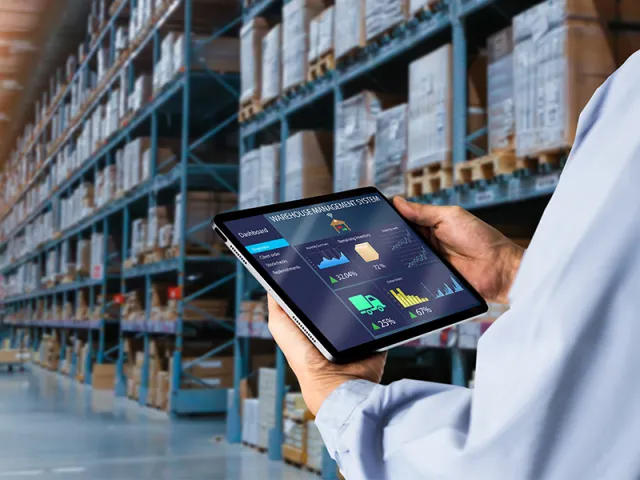Table of contents
For life sciences companies, accurate forecasting and planning are essential to ensuring that patient demand can be fulfilled and supply chain disruptions are minimized. Substantial investments have been made in Integrated Business Planning (IBP) platforms with advanced algorithms to model everything from treatment protocol changes to global supply risks. But even with these tools, the industry continues to suffer from stockouts, excess inventory, and rising failure-to-supply penalties.
One of the biggest challenges? The data feeding these systems is often delayed, inconsistent, and incomplete—because most companies still struggle to quickly and efficiently link with downstream customers in a scalable, automated way.
Most life sciences companies continue to rely on manual processes or building point-to-point integrations for each customer. These integrations are expensive, resource-intensive, and time-consuming. As a result, many companies fall back on manual processes, exchanging forecasts via spreadsheets, emails, or EDI files that arrive on inconsistent schedules and in incompatible formats.
This fragmented, resource-heavy approach breaks the promise of real-time visibility and renders IBP systems less effective. Planners are left scrambling to assemble a complete view of demand using stale or incomplete data—and decisions suffer as a result.
The Consequences: Stockouts, Overproduction, and Planning Chaos
When life sciences companies are unable to efficiently link with downstream customers to exchange forecast and planning data in a consistent, automated way, the impact is severe and far-reaching:
- Planners spend hours manually reconciling forecasts from emails, spreadsheets, and EDI files—draining productivity and delaying action.
- Forecast updates arrive too late, forcing costly last-minute adjustments to production schedules, or leading to stockouts or excess inventory.
- Downstream demand signals—like pharmacy or hospital consumption—are delayed and often incorrect, making it nearly impossible to plan effectively.
Without a scalable way to link trading partners, companies fall into a reactive planning cycle—struggling to keep up with changing demand and unable to trust the data feeding their IBP systems.
The Future State: Linked Partners. Real-Time Data. Smarter Decisions.
Now imagine a different future—one where linking to every downstream customer, regardless of system, data format, or digital maturity, is fast, affordable, and scalable.
In this world, forecast and planning data flows automatically from every customer into a harmonized, real-time view. Data quality issues are significantly reduced because the inputs are system-generated, minimizing human data entry errors. The result is more timely and accurate information in your IBP solution. Forecasts that once took days or weeks to consolidate are available in minutes leading to faster and accurate supply chain decisions.
The Business Impact: Less Friction. More Value.
With customers easily linked and forecast data delivered in real time, life sciences companies achieve:
- Faster, more accurate forecasting with real-time inputs feeding directly into their IBP systems
- Higher service levels and fewer stockouts by eliminating delays and surprises in downstream demand
- Significant cost savings by reducing manual intervention, overproduction, and expedited logistics
Additionally, companies can spend more time on strategic planning activities and less time fixing data problems.
The Capabilities Required: Scalable Partner Linking and Automated Data Exchange
To reach this future state, companies need more than a better spreadsheet or planning algorithm. They need:
- The ability to rapidly link any customer—regardless of digital maturity or technical system—into automated planning workflows
- Automated transformation and contextualization of all incoming forecast and planning data, eliminating the need for manual mapping
- Real-time synchronization between forecast data and IBP systems, enabling immediate, trustworthy decision-making
These capabilities form the foundation of a modern, agile planning process—and they’re exactly what TraceLink delivers. With MINT for Commerce, life sciences companies gain the speed, scale, and automation they need to eliminate manual effort, improve forecast reliability, and make faster, more informed planning decisions across the supply chain.
How TraceLink Does It Better
TraceLink MINT for Commerce provides life sciences companies a faster, more cost-effective way to link with downstream customers and automate the exchange of forecasting and planning data.
- TraceLink's scalable B2N Integrate-Once™ architecture lets you onboard a customer once and then reuse that integration to exchange forecasts and planning data with each of your other customers—there's no need to rebuild for each one.
- Multi-modal interfaces for customers to exchange forecast and planning data including user interface data entry, file upload, or integration with customer’s business system. —gives each customer a path to participate without added burden
- Prebuilt integrations, TraceLink Actions, with major ERP and other system providers eliminate the need for costly IT resources or custom integration projects
- OPUS Reports & Dashboards enables teams to easily analyze forecasting and planning data, identify data issues, and uncover insights to improve supply performance—without relying on spreadsheets or IT.
With MINT for Commerce, life sciences companies can eliminate the biggest obstacle to effective planning—linking with customers for forecast and planning data—and finally unlock the full value of their IBP systems.
Ready to transform your forecasting and planning processes? Contact TraceLink today to schedule a meeting and learn how MINT for Commerce can help you eliminate inefficiencies, improve customer service levels, and build a more agile, resilient supply chain.





